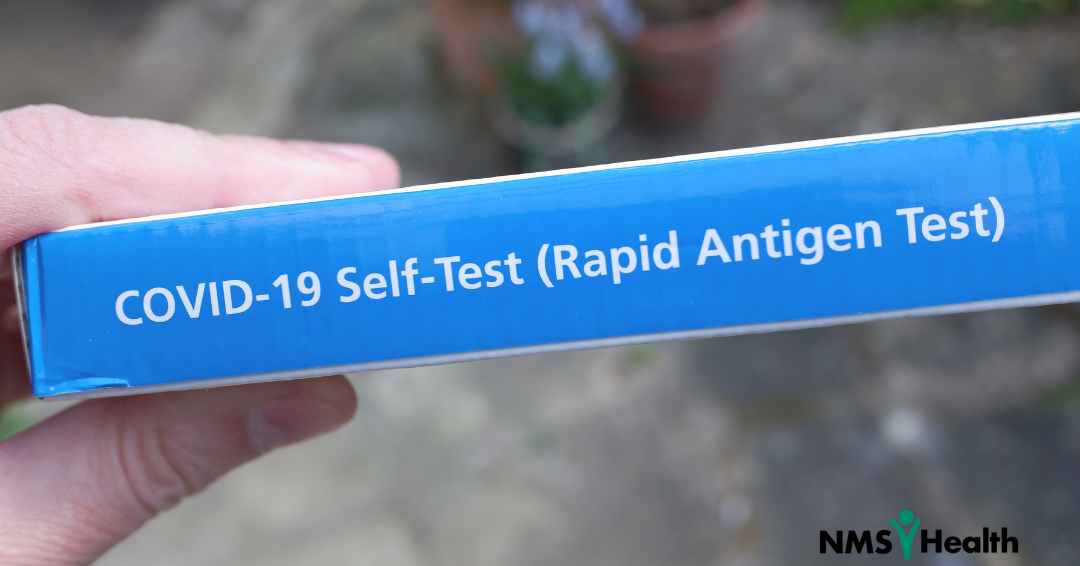With the holiday season swiftly approaching, many families are relying on at-home rapid COVID tests to provide some peace of mind. Several rapid tests have been approved for use. While you could go to your nearest pharmacy for a PCR test, you then have to wait for results which could take up to a few days. These at-home rapid tests can detect coronavirus within minutes.
What is an at-home rapid COVID test?
The biggest benefit of an at-home rapid test is that it is in fact, rapid. While there are some at-home test kits on the market which require that you mail your sample out to a lab for further testing, a rapid kit can provide results in about 15 minutes. With these rapid tests, collection and testing can both occur wherever you are located this holiday season.
The U.S. Food and Drug Administration has given emergency-use authorizations for two kinds of rapid tests: molecular and antigen. Molecular tests examine the genetic material of your sample to detect the presence of the COVID virus. These tests may be more sensitive when it comes to detection, but they also have a steeper price tag. The antigen test looks for the presence of a protein that binds to the coronavirus’ RNA inside your nose.
Are rapid test results reliable?
Much like laboratory COVID testing, it might be difficult to detect coronavirus if you have just been exposed. It typically takes several days for your viral load to be high enough to be detected through testing, or for you to begin exhibiting symptoms. Additionally, at-home tests rely on the user to follow directions exactly and be extremely precise in their collection of the specimen. It is crucial for the user to read and follow the detailed instructions for accurate results.
Molecular tests are the best bet for earlier detection. These tests amplify the amount of genetic material in the given sample, which allows them to detect the virus at an early stage. Unfortunately, these tests may also find traces of the virus after a person has recovered from a COVID infection and is no longer contagious.
Antigen tests have been able to avoid false positives as well as the molecular tests.
The CDC has stated these tests work just as well when it comes to detecting COVID in someone who is showing symptoms of the disease, such as a cough, or fever, but for those who have the virus but have not yet shown symptoms, these tests can fall short. False positives have been known to happen. Recently, Ellume recalled over 2 million of its COVID-19 Home Test rapid kits due to what the FDA decided was "higher-than-acceptable false positive test results." The CDC and the FDA recommend that people perform a second antigen test a few days after the first one, which is why the kits are sold in two-packs. If you are planning on testing multiple people in your household for the holidays, this should be a consideration when planning and purchasing tests.
What if the results are positive?
If you test positive with an at-home rapid test, the CDC advises that you confirm the result by getting a PCR or other molecular test, such as those performed in a laboratory and inform your personal healthcare provider of your positive test result. While awaiting confirmation results from the laboratory, quarantine and self-isolation recommendations should be followed.
“As much as possible, stay in a specific room and away from other people and pets in your home or place of residence. If possible, you should use a separate bathroom. If you need to be around other people or animals in or outside of the home or place of residence, wear a mask. Don’t share personal household items, like cups, towels, and utensils.”
At-home testing tips
The CDC recommends that when performing at-home COVID testing:
- Store all test components according to the manufacturer’s instructions until ready for use.
- Check the expiration date. Don’t use expired tests or test components that are damaged or appear discolored based on the manufacturer’s instructions.
- Clean the countertop, table, or other surfaces where you will do the test.
- Don’t open test devices or other test components until you are ready to start the testing process.
- Read and record test results only within the amount of time specified in the manufacturer’s instructions. A result read before or after the specified timeframe may be incorrect.
- Don’t reuse test devices or other components.
- After you have the results, discard the specimen collection swab and test kit in the trash, clean all surfaces that the specimen may have touched, and wash your hands.
Rapid at-home tests may be increasingly hard to find this holiday season, and experts say the specific brands shouldn’t worry you too much. “Any of the tests that you can find are way better than not having tests,” Dr. Ashish Jha, dean of the Brown University School of Public Health in Rhode Island, told the Los Angeles Times. “Rapid tests are a measure of contagiousness, and so you want to test as close as you can of getting together with people,” Jha said. “The ideal situation would be to test on Thursday morning.”
Sources:
Healy, Jon. “Reuniting with Family This Holiday Season? at-Home Covid Tests Could Make It Safer.” Los Angeles Times, Los Angeles Times, 22 Nov. 2021, https://www.latimes.com/lifestyle/story/2021-11-16/make-your-holiday-gatherings-covid-safer-with-rapid-tests.
“Self-Testing.” Centers for Disease Control and Prevention, Centers for Disease Control and Prevention, https://www.cdc.gov/coronavirus/2019-ncov/testing/self-testing.html.


